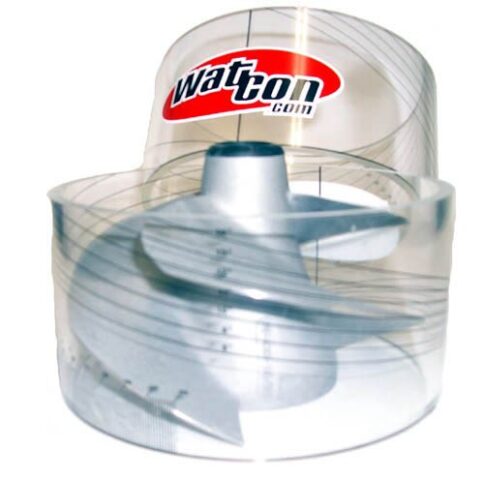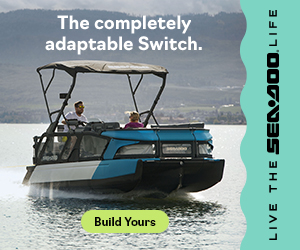
In his usual clear, simple and highly informative style, John Zigler of Watcon has released a new video on his hidden gem of a channel Watercraft Talk. This latest installment deals with Watcon’s line of Impeller Pitch Ring Gauges.
These useful tools come in four different sizes from 140mm to 171mm, with 160mm being most common. Each is actually a set of two gauges, one for measuring the leading edge and the other for the trailing edge. The example used in the video is in 148mm, and the impeller being measured is an Impros Hooker in 9/15 for the Yamaha SuperJet.
Impeller Pitch Gauges are short clear cylinders with dark lines of pitch marked on them. To demonstrate the measurement process Zigler carefully lines up the gauge outside of the impeller with the appropriate gauge line. The leading and trailing edges are the important parts, because with progressive pitch the impeller will begin to deviate from the relevant gauge line, so the first inch is the important part, which he has marked in black on the impeller.

As explained in the video, the Watcon Gauges line up better with Impros and Skat-Trak impellers, but can be inconsistent with Solas pitch numbers. However this does not present a problem as the important part is the relative measurement, not so much the outright numbers.
Less pitch results in more RPM, and conversely more pitch will bring down the RPM. Although the leading edge has a higher effect on initial acceleration and bottom end hook up and thrust, and the trailing edge is more for top speed, high end thrust and overall pump pressure, the changes will effect the impeller across the range.
Check out the range of Watcon Impeller Pitch Gauge Sets, and see the video below:







